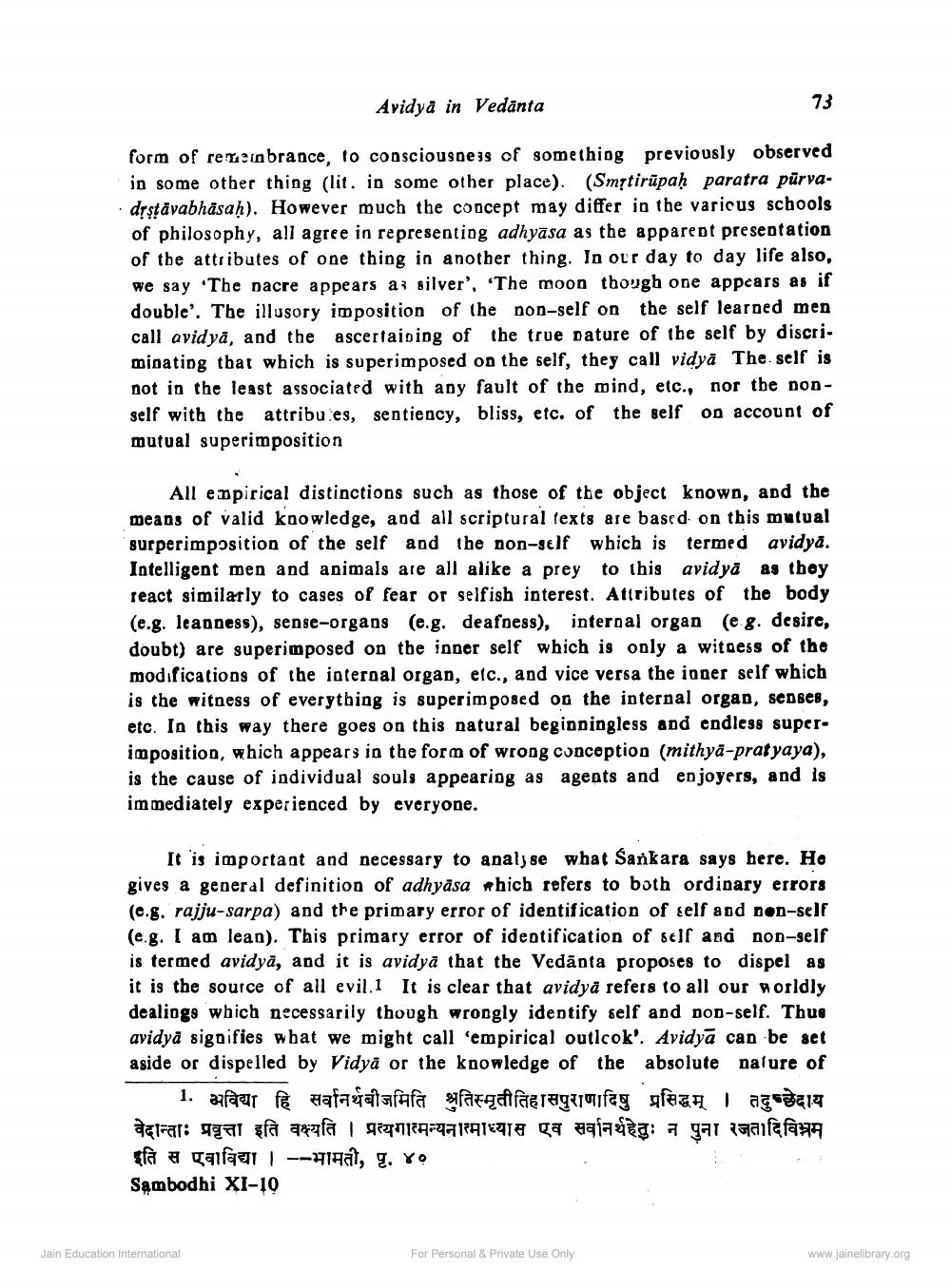________________
Avidya in Vedanta
73
form of ren inbrance, to consciousness of something previously observed in some other thing (lit. in some other place). (Smộtirūpaḥ paratra pūrva. drstāvabhäsaḥ). However much the concept may differ in the various schools of philosophy, all agree in representing adhyāsa as the apparent presentation of the attributes of one thing in another thing. In our day to day life also, we say 'The nacre appears as silver', 'The moon though one appears as if double'. The illusory imposition of the non-self on the self learned men call avidya, and the ascertaioing of the true nature of the self by discri. minating that which is superimposed on the self, they call vidyā The self is not in the least associated with any fault of the mind, etc., nor the nonself with the attribu.es, sentiency, bliss, etc. of the self on account of mutual superimposition
All empirical distinctions such as those of the object known, and the means of valid knowledge, and all scriptural texts are based on this mutual surperimposition of the self and the non-self which is termed avidya. Intelligent men and animals are all alike a prey to this avid ya as they react similarly to cases of fear or selfish interest. Attributes of the body (e.g. leanness), sense-organs (e.g. deafness), internal organ (eg. desire, doubt) are superimposed on the inner self which is only a witness of the modifications of the interoal organ, etc., and vice versa the inner self which is the witness of everything is superimposed on the internal organ, senses, etc. In this way there goes on this natural beginningless and endless super. imposition, which appears in the form of wrong conception (mithya-pratyaya), is the cause of individual souls appearing as agents and enjoyers, and is immediately experienced by everyone.
It is important and necessary to analyse what Sankara says here. Ho gives a general definition of adhyāsa which refers to both ordinary errors (e.g. rajju-sarpa) and the primary error of identification of self and non-self (e.g. I am lean). This primary error of identification of self and non-self is termed avidya, and it is avidyā that the Vedānta proposes to dispel as it is the source of all evil.1 It is clear that avidyā refers to all our worldly dealings which necessarily though wrongly identify self and non-self. Thus avidyā signifies what we might call 'empirical outlcok'. Avidyā can be set aside or dispelled by Vidyā or the knowledge of the absolute nature of
1. अविद्या हि सर्वानर्थबीजमिति श्रुतिस्मृतीतिहासपुराणादिषु प्रसिद्धम् । तदुच्छेदाय वेदान्ताः प्रवृत्ता इति वक्ष्यति । प्रत्यगात्मन्यनारमाध्यास एव सर्वानर्थहेतुः न पुना रजतादिविनम sfà a galaal | --Hlaat, g. Yo Sambodhi XI-10
Jain Education International
For Personal & Private Use Only
www.jainelibrary.org




